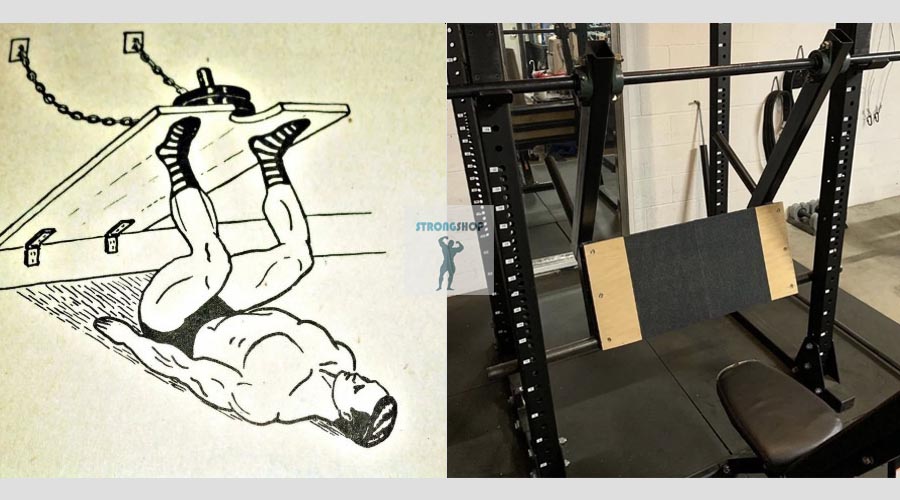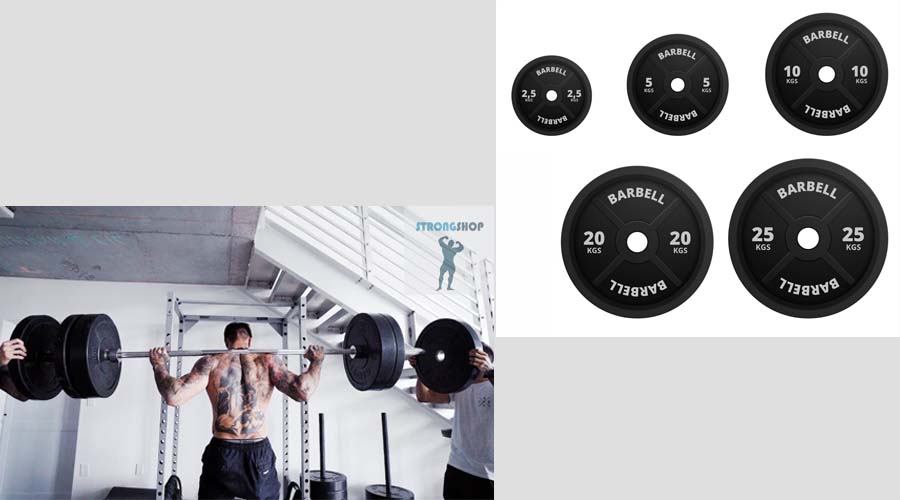The pyramid training principle is one of the most popular and time-tested methods.
It has been used and is still used by bodybuilders, powerlifters, and many other strength athletes.
Definition and essence of the method
The pyramid training principle is a method of gradually increasing (or decreasing) the barbell weight while simultaneously adjusting the number of repetitions. The idea is to distribute the load on the muscles optimally, avoiding both overfatigue and insufficient stimulation.
A typical pyramid workout starts with a lighter weight and more reps, then increases the weight while decreasing the reps.
History and origin of the pyramid method
The method originated in the 1950s in American gyms. One of the first to systematically apply it was legendary bodybuilder Reg Park.
Later, Arnold Schwarzenegger and other athletes of the "Golden Era" of bodybuilding actively used this method.
This principle allowed athletes to combine strength development and hypertrophy, making it a universal tool in training routines.
Types of pyramids in strength training
1. Ascending pyramid
This version involves gradually increasing the weight from set to set while reducing the number of repetitions.
Example:
Set 1: 12 reps at 50 kg
Set 2: 10 reps at 60 kg
Set 3: 8 reps at 70 kg
Set 4: 6 reps at 80 kg
Advantages
Gradual preparation of muscles for heavier loads
Disadvantages
Some loss of strength by the time you reach maximum weights
2. Reverse pyramid
In this version, the heaviest weight is used at the beginning of the workout, then the weight is gradually decreased while the reps increase.
Example:
Set 1: 6 reps at 80 kg
Set 2: 8 reps at 70 kg
Set 3: 10 reps at 60 kg
Set 4: 12 reps at 50 kg
Advantages
Maximal strength output at the start
Disadvantages
Requires a thorough warm-up
3. Full (double) pyramid
This version combines both ascending and descending pyramids in one exercise. First the weight increases, then decreases, allowing for maximum muscle stimulation.
Advantages
Comprehensive muscle engagement
Disadvantages
Very energy-consuming and time-intensive
4. Truncated pyramid
The truncated pyramid is like the ascending pyramid, but without the lighter weights and high-rep sets at the start.
It focuses only on increasing the weight without a descending phase. It’s suitable for those focusing solely on building strength or muscle mass without volume work.
Advantages
Rapid strength progression
Disadvantages
Risk of overtraining with frequent use
5. Step pyramid
Involves gradually increasing weight only during warm-up. Once the working weight is reached, it remains consistent throughout the working sets.
Warm-up example:
Set 1: 12 reps at 40 kg (warm-up)
Set 2: 10 reps at 50 kg (warm-up)
Set 3: 6 reps at 70 kg (working weight)
Then 2–3 working sets at 70 kg with no weight changes
Advantages:
Energy-efficient warm-up
Stable technique at working weight
Disadvantages:
Limited load variability
Applying the pyramid principle in bodybuilding
Goals and purposes in bodybuilding
In bodybuilding, the pyramid principle not only increases strength but also promotes maximum hypertrophy. It supports progressive overload, the key stimulus for muscle growth.
Sample mass-building workout
Straight pyramid example for chest:
Barbell bench press:
12 reps at 50% 1RM
10 reps at 60% 1RM
8 reps at 70% 1RM
6 reps at 80% 1RM
Tip: Use slow eccentric movement to increase time under tension (TUT).
Applying the pyramid principle in powerlifting
Goals and purposes in powerlifting
In powerlifting, the goal is maximum strength development. Reverse and truncated pyramids are most often used to emphasize heavy sets when energy is highest.
Sample strength-building workout
Reverse pyramid example for squats:
5 reps at 85% 1RM
6 reps at 80% 1RM
8 reps at 75% 1RM
Tip: Always do a thorough warm-up before heavy sets.
How to design a pyramid-based training program
Choose based on your goals:
For mass: ascending or full pyramid
For strength: reverse or truncated pyramid
Determining working weights and reps
Calculate weights based on your one-rep max (1RM) and adjust intensity according to your pyramid structure.
Periodization and load progression
Gradually increase your working weights every 2–3 weeks to ensure steady progress. Track recovery to avoid overtraining.
Common mistakes
Incorrect weight selection
Weights that are too heavy early on can cause early fatigue and higher injury risk.
Lack of progression and adaptation
Without progressive overload, the body adapts and progress stalls.
Ignoring recovery and overtraining
Overtraining leads to reduced performance and higher injury risk. Incorporate regular deload weeks.
Recommendations for beginners and advanced athletes
Start with ascending pyramids to maintain control over technique.
Don’t chase big weights right away.
Advanced athletes should use reverse or full pyramids for maximum muscle stimulus.
Experiment with rep tempo.
Frequently asked questions about the pyramid method
1. Which pyramid type is best for beginners?
Ascending, because it safely builds up load.
2. Can this principle be used for every exercise?
Yes, but it’s better to apply it to compound lifts to preserve energy.
3. How often should I switch pyramid types?
Change types every 8–12 weeks to avoid adaptation.
4. How to avoid overtraining with pyramid training?
Include deload weeks every 4–6 weeks.
5. Can pyramid training be used during cutting?
Yes, just emphasize more reps and lighter weights.
6. Do I need a special warm-up before pyramid training?
Absolutely! A light warm-up helps prevent injury and prepares the body.
Conclusion
The pyramid training principle is a powerful and versatile tool for developing strength, muscle mass, and endurance. No matter your fitness level, proper use of pyramid schemes helps achieve goals and avoid plateaus.
By following simple guidelines and adapting the approach to your needs, you can dramatically increase your training effectiveness.





